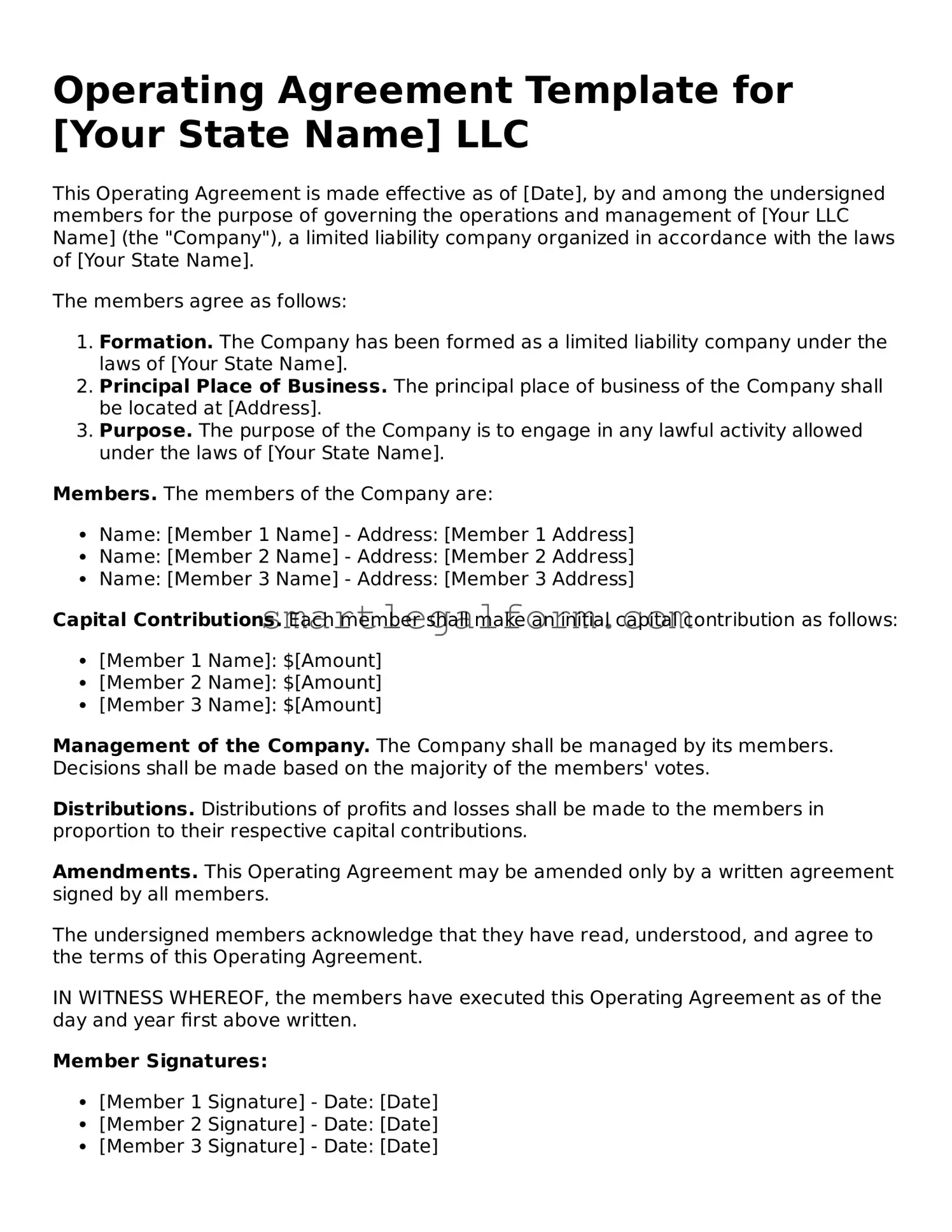Operating Agreement Template for [Your State Name] LLC
This Operating Agreement is made effective as of [Date], by and among the undersigned members for the purpose of governing the operations and management of [Your LLC Name] (the "Company"), a limited liability company organized in accordance with the laws of [Your State Name].
The members agree as follows:
- Formation. The Company has been formed as a limited liability company under the laws of [Your State Name].
- Principal Place of Business. The principal place of business of the Company shall be located at [Address].
- Purpose. The purpose of the Company is to engage in any lawful activity allowed under the laws of [Your State Name].
Members. The members of the Company are:
- Name: [Member 1 Name] - Address: [Member 1 Address]
- Name: [Member 2 Name] - Address: [Member 2 Address]
- Name: [Member 3 Name] - Address: [Member 3 Address]
Capital Contributions. Each member shall make an initial capital contribution as follows:
- [Member 1 Name]: $[Amount]
- [Member 2 Name]: $[Amount]
- [Member 3 Name]: $[Amount]
Management of the Company. The Company shall be managed by its members. Decisions shall be made based on the majority of the members' votes.
Distributions. Distributions of profits and losses shall be made to the members in proportion to their respective capital contributions.
Amendments. This Operating Agreement may be amended only by a written agreement signed by all members.
The undersigned members acknowledge that they have read, understood, and agree to the terms of this Operating Agreement.
IN WITNESS WHEREOF, the members have executed this Operating Agreement as of the day and year first above written.
Member Signatures:
- [Member 1 Signature] - Date: [Date]
- [Member 2 Signature] - Date: [Date]
- [Member 3 Signature] - Date: [Date]
